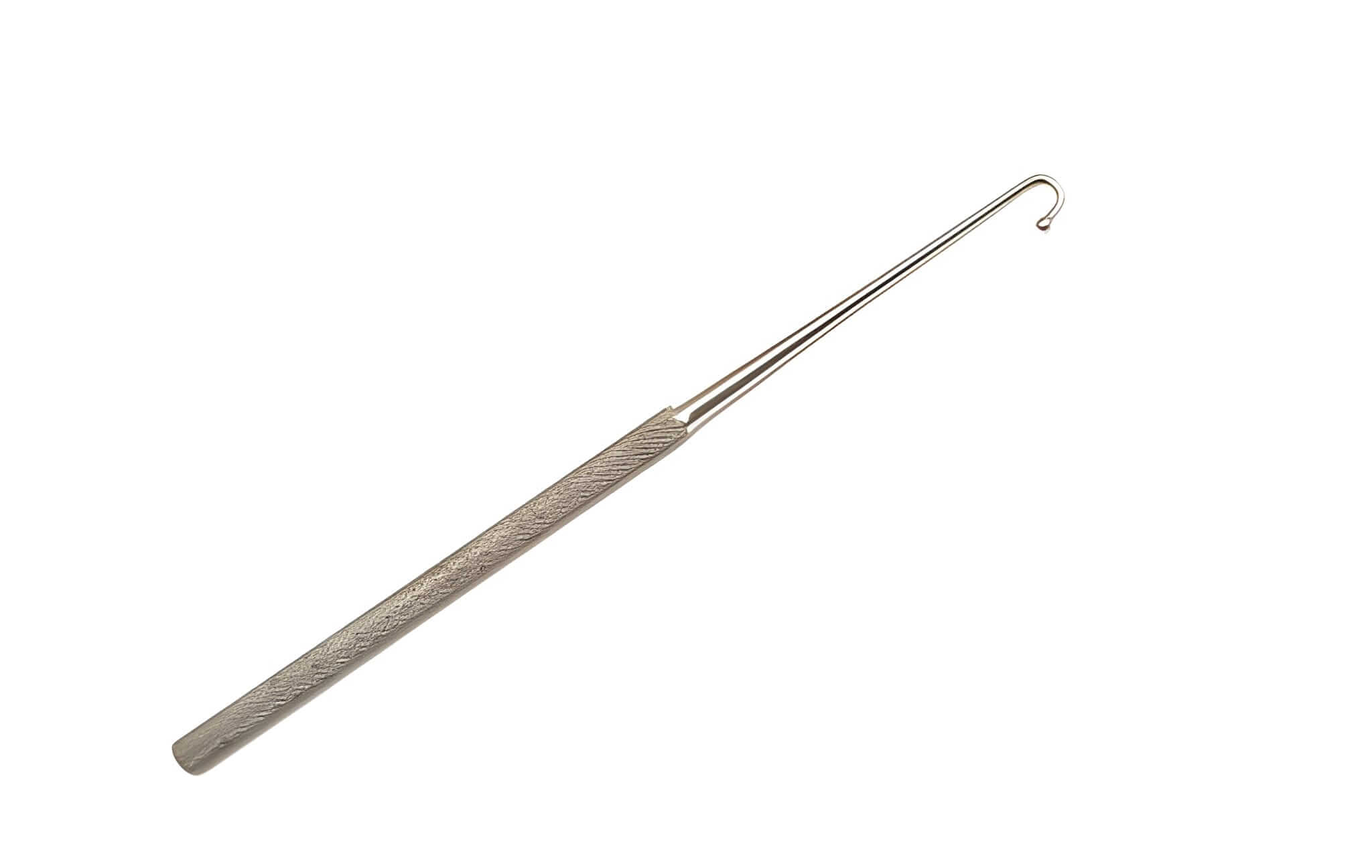Removing an intrauterine device (IUD) might sound intimidating, but with the right care and technique, it’s a simple and quick process. Whether your IUD is due for removal or you’re experiencing discomfort, understanding how the IUD extractor works can help you feel prepared and confident.
As a family nurse practitioner in Hartford, I’ve removed many IUDs — including Mirena, Kyleena, and Paragard. Most removals take less than a minute, and patients are often surprised at how painless it is. The key lies in using the proper IUD hook and gentle technique.
What Is an IUD Extractor?
An IUD extractor, sometimes called an IUD hook, is a small, sterile medical tool used to remove an intrauterine device from the uterus. It’s thin, flexible, and shaped to gently catch the IUD’s strings for safe removal.
During removal, your healthcare provider inserts a speculum to view the cervix, locates the IUD strings, and uses the extractor to pull the device out with steady, controlled pressure. The process usually lasts less than 30 seconds.
If the strings are visible, the removal is straightforward. If they’re not, the IUD extractor hook helps locate and retrieve the IUD safely without damaging surrounding tissue.
When to Schedule IUD Removal
Most hormonal IUDs last between 3 and 8 years, while copper IUDs can last up to 10–12 years. You should schedule removal if:
-
Your IUD has reached its expiration date.
-
You’re experiencing pain, cramping, or irregular bleeding.
-
You want to get pregnant.
-
Your doctor advises removal due to infection or displacement.
Even if you aren’t having symptoms, it’s best to remove an expired IUD on time. Leaving it in too long can increase the risk of infection or make removal more difficult later.
What Happens During an IUD Extraction Appointment
Here’s what a typical appointment looks like:
Step 1: Positioning and Preparation
You’ll lie back on the exam table, similar to a pelvic exam. The provider inserts a speculum to visualize the cervix.
Step 2: Locating the Strings
If the IUD strings are visible, removal is quick. The provider uses sterile forceps or an IUD hook to grasp the strings.
Step 3: Gentle Removal
With steady traction, the IUD slides out. You may feel brief cramping — similar to a menstrual cramp — as the arms of the device fold inward during removal.
Step 4: Aftercare
Once removed, the provider inspects the IUD to confirm it’s intact. You might have light spotting or mild cramps for a day or two.
Most patients return to work or normal activity immediately after.
When the Strings Aren’t Visible
In some cases, IUD strings retract into the cervix or uterus. This can happen naturally and doesn’t mean something is wrong.
In these situations, the IUD extractor tool becomes essential. The provider gently inserts the hook through the cervix and rotates it to locate and catch the IUD’s base or string.
If the IUD is embedded or stuck, ultrasound guidance may be used to assist removal. In very rare cases, minor surgical removal may be required.
Attempting to remove an IUD at home is never safe. The uterus is delicate, and improper removal can cause injury or infection. Always have removal done by a licensed healthcare professional.
After IUD Removal: What to Expect
After removal, you might notice light bleeding or mild cramps for up to 48 hours. These symptoms are normal and usually fade quickly.
If you had a hormonal IUD like Mirena or Kyleena, your period may take a few weeks to return to its natural rhythm. For copper IUDs, your cycle often returns immediately.
If you’re not planning pregnancy, ask your provider about switching to another birth control method right away — fertility can return within days of removal.
Why IUD Extraction Should Be Done by Professionals
Using an IUD hook may look simple, but removal requires a trained hand. A professional ensures:
-
Sterile instruments and technique to prevent infection.
-
Correct positioning to avoid uterine injury.
-
Immediate care if complications arise.
In-office removal also allows your provider to assess the uterus and cervix for inflammation, scarring, or other changes — important information for your long-term reproductive health.
Common Myths About IUD Extraction
Myth 1: You can remove an IUD yourself.
Fact: DIY removal can cause injury, bleeding, or incomplete extraction.
Myth 2: Removal is painful.
Fact: Most women describe mild discomfort lasting only seconds.
Myth 3: You need anesthesia.
Fact: Local anesthesia is rarely needed; gentle technique keeps it nearly painless.
Myth 4: You can’t reuse an IUD.
Fact: IUDs are single-use only. Once removed, a new one must be inserted.
Risks and When to Call Your Doctor
Serious complications after IUD extraction are rare, but contact your provider if you notice:
-
Heavy bleeding that soaks a pad within an hour.
-
Fever, chills, or foul-smelling discharge.
-
Severe abdominal pain.
These signs may indicate infection or retained fragments and need prompt evaluation.
Can You Use Tampons After an IUD Removal?
Yes, in most cases, you can use tampons as soon as light spotting starts to fade — usually within 24 hours. Avoid using tampons immediately after removal if you have bleeding heavier than a normal period or if your provider advises waiting.
This short waiting period helps the cervix close naturally and reduces infection risk.
Experience from Clinical Practice
Over the years, I’ve found that patient anxiety about IUD removal often fades once they understand the process. The use of the IUD extractor hook looks technical, but when done gently, it’s one of the easiest gynecologic procedures.
Patients are often surprised when I say, “You’re all done,” because they didn’t even realize the IUD had already been removed. A calm, informed mindset always helps the experience go smoothly.
FAQs
Q1: Can you use a tampon with an IUD?
Yes. Once the IUD is properly placed, using tampons won’t dislodge or affect it. Just insert and remove them gently.
Q2: What is an IUD hook used for?
An IUD hook helps your clinician locate and remove the IUD safely when the strings are not visible.
Q3: Why no bath after IUD insertion?
To reduce infection risk, it’s best to avoid baths, pools, or hot tubs for 48 hours after insertion. Showers are fine.
Q4: How long does it take to remove an IUD?
Most removals take less than one minute from start to finish.
Q5: Is IUD removal more painful than insertion?
Usually, it’s less painful. Most patients describe mild cramping that fades quickly.
Final Thoughts
An IUD extractor is a simple yet essential tool that allows for safe and effective IUD removal. When performed by a trained clinician, the process is quick, clean, and low-risk.
If your IUD is due for removal or you’re switching contraception, schedule a visit with your healthcare provider in Hartford. Professional care ensures your comfort, safety, and continued reproductive health.
Disclaimer: This is informational content, not a substitute for professional medical advice.

Meghan Killilea Galli, APRN, FNP-BC, is a board-certified Family Nurse Practitioner based in Connecticut with over 5 years of clinical experience in urology, women’s pelvic health, and primary care. She currently practices with Hartford HealthCare and Griffin Faculty Practice Plan, where she provides evidence-based, patient-centered care. Meghan founded Health Gardeners to make reliable health information accessible for Hartford residents and beyond. Read More ![]()

